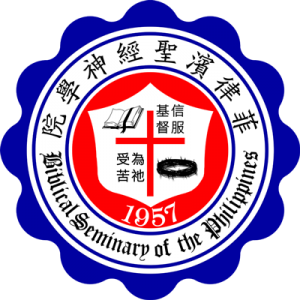BOOK REVIEW: Builders of the Chinese Church: Pioneer Protestant Missionaries and Chinese Church Leaders
edited by G. Wright Doyle. Studies in Chinese Christianity Series (Eugene, OR: Pickwick Publications, 2015).
 This book is a welcome addition to the Studies in Chinese Christianity Series and to the history of the Church in China. It affords the Christian community and the world at large a refreshing appreciation of seven Protestant missionaries and two Chinese Church leaders. Right from the start, in the Introduction, the author explains why he chose to write and evaluate the biographies of seven missionaries and only two Chinese leaders. The first reason is because “Protestantism was brought to China by messengers from the West, and these foreigners essentially laid the foundation upon which they expected the Chinese to build,” this despite the fact that the “Chinese evangelized, taught, and shepherded their own people far better than foreigners ever could.” (p.8)
This book is a welcome addition to the Studies in Chinese Christianity Series and to the history of the Church in China. It affords the Christian community and the world at large a refreshing appreciation of seven Protestant missionaries and two Chinese Church leaders. Right from the start, in the Introduction, the author explains why he chose to write and evaluate the biographies of seven missionaries and only two Chinese leaders. The first reason is because “Protestantism was brought to China by messengers from the West, and these foreigners essentially laid the foundation upon which they expected the Chinese to build,” this despite the fact that the “Chinese evangelized, taught, and shepherded their own people far better than foreigners ever could.” (p.8)
The second reason is that there is far more information about missionaries than about their converts, helpers or successors. This may be due to the fact that many of the early Chinese Christians came from the lower class and could not write their own story, or the missionaries often did not identify their Chinese colleagues fully or write much about them.
The seven missionaries lived and worked in China roughly between the years 1807 and 1936. They include: Robert Morrison (1782-1834), James Legge (1815-97), Griffith John (1831-1912), James Hudson Taylor (1832-1905), William Alexander Parsons Martin (1827-1916), Timothy Richard (1845-1919) and Jonathan Goforth (1859-1936). The editor, G. Wright Doyle, purposely chose these seven because their lifetime achievements covered almost all the spectrum of mission work in China – evangelism and preaching, translation work, literary publications, Sinological studies, education, engaging Chinese culture and politics, church planting, medical service, ministering to women, teaching and training believers and pastors.
The two Chinese church leaders are Liang Fa (1789-1855) and Pastor Hsi or Xi Shengmo (1835-96). Liang Fa was the first convert of the Protestant missionaries who assisted in their evangelistic work by writing tracts. Pastor His was a former Daoist and opium addict who became a preacher and took the cause of fighting the opium scourge.
The title of the book is Builders of the Chinese Church, hence, the seven writers – Christopher D. Hancock, Jonathan A. Seitz, Lauren Pfister, Noel Gibbard, Yading Li, Wenzong Wang, and Doyle – aimed to centralize the life and ministry of these nine personalities to this focus. In presenting the life of these personalities, the positive and negative aspects of their characters are given fair treatment (e.g. pp. 79-81 cf. with pp. 81-82; 118-120 cf. with pp. 116-117). Very often, the activities of these personalities were related to political and social events of China (Morrison’s diplomatic role, Liang and Martin in relation to the Taiping Rebellion; Timothy Richard and the reformation movement during the Qing dynasty).
Liang Fa and Pastor Hsi belong to an important period of the history of church in China, i.e., the foundational stage. Liang Fa was baptized in Malacca on November 3, 1815. His fields of ministry alternated between Guangdong, Malacca and Singapore, but it was basically before the formation of the church in China. Protestant mission formally began in 1842 in Fujian and Sinkoe Chapel, the first Protestant church in China, was inaugurated in 1849. Technically speaking, it was the formative stage. Likewise, Pastor Hsi was baptized in Pinyang Shanxi in November 1880, thirty-eight years after 1842. This is still during the formative years of China’s Christian history.
It would have been more appropriate to choose a church leader in a later period of this history. Two persons come to mind, albeit there are probably a hundred or more to choose from (one can easily check the Biographical Dictionary of Chinese Christianity website to see the great number of choices available). The first one is Rev. Xu Sheng Yan許聲炎牧師 (1866–1948), a prominent leader in Fujian and in my opinion, a true builder of the Chinese church in that region. Documentary sources on his life and ministry, both written by others and by himself, are readily available. Another person is Rev. Cheng Jingyi 誠靜怡 (1881-1939), the first moderator of the Church of Christ in China. Both of these men were renowned leaders in the national level.
Lastly, it is also lamentable that not one female missionary was included in this book. There were countless female missionaries who gave their lives in order to build the Chinese church. Their contribution of evangelizing Chinese women and educating female believers who later became teachers and influential matriarchs should not be missing from this great enterprise of building the Chinese church.
Jean Uayan, Ph. D.
Faculty, Biblical Seminary of the Philippines and Asia Graduate School of Theology
